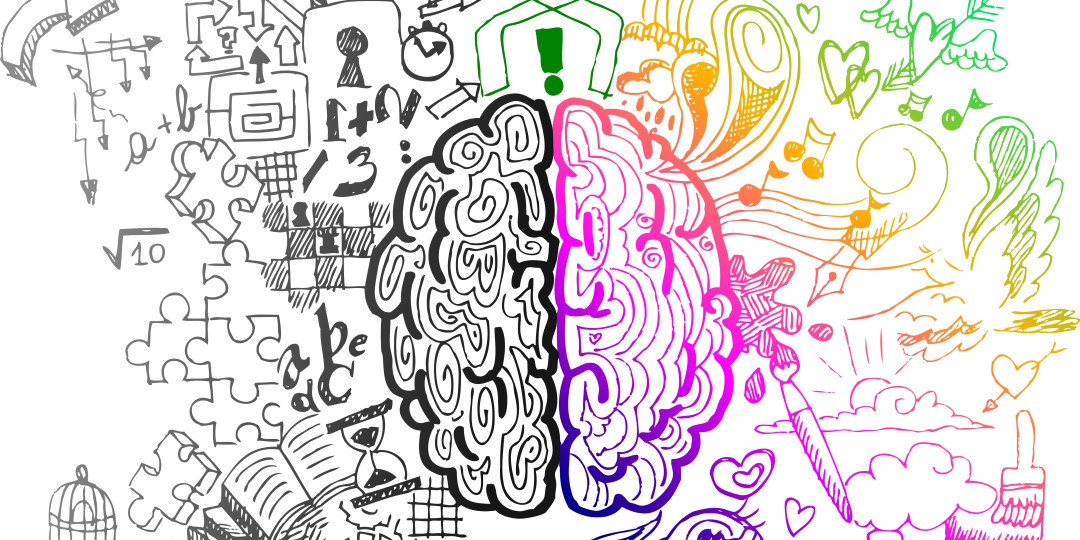Design Thinking – Left or Right Brain?
- May 03, 2016
- By Kalei
- In Design
- 0 Comments
As a business student working in the design field, I’ve often found myself conflicted about whether I’m naturally left-brained, or right-brained. The business school is full of analytical types seeking jobs in accounting and finance—a lot of the time our classes are very numbers-based appealing to the left-brain student. In marketing, you tend to find the more artsy type seeking jobs in marketing, but classes aren’t necessarily tailored to that state of mind. I’ve always been told that I’m creative by my family and friends that see my work, but then I meet design students and I feel so artistically challenged.
While I’ve mastered my skills at Photoshop and Illustrator, I can’t draw a stick figure to save my life. This is extremely uncommon in the design world—a lot of my designer friends are beautiful artists by hand and computer. I’ve always lacked this skill, and I think it’s why I often veer away form the illustration jobs. I wonder if maybe my design skill actually comes from the left-brained side of me that just learned to use these programs on a very technical level. I’ve always done better in math classes than English classes, but I think that I enjoy the arts more. I know students that can crunch data for hours and come up with a beautiful spreadsheet answering every question a professor could ever ask, and I know students who can sit down and doodle for five minutes and come up with a beautiful piece of art. Working with people like this have actually made me feel like I’m not good enough at either field to find success in the workplace, because I’ll always be compared to someone better than me.
Today I watched a seminar on design thinking in the workplace, and how it aligns with creativity and business. The presentation had one slide that really resonated with me—it showed the difference between business thinking, design thinking, and creative thinking on a scale. Business on the far left, creative on the far right, and design somewhere in them middle. The position on the scale correlated to the sides of the brain that each position used. Design is connecting the dots between the data and the art—it’s making a visually and emotionally appealing solution to a problem. That’s where I want to be.
I think one of my strengths is actually that I don’t heavily veer in either direction—I have a very balanced proportion of left-brained thinking to right-brained thinking. This comes in handy when working on case competitions or consulting projects at school—I’m able to come up with creative solutions, while still able to drill at the data to support this idea. I took an online test to determine the percentage of each side of the brain that I naturally use, and while of course this isn’t completely accurate, it gave me a good idea of where I land – 44% left brained, and 56% right brained… sounds about right to me.
I hope one day I’m able to find a job that caters to my desire to work in the creative industry, while still allowing me to use my strength of analytical skills. I know I can never have a full career in illustration or design, because this isn’t my core talent. On the flip side, I’d never be able to sit at a desk and crunch numbers 40-hours a week. I seek positions that allow me to come up with creative strategies, and really gain my advantage in my ability to flip to that left-brain and back it up with an analysis.
Design thinking is absolutely important in the real world no matter what field you’re in. Many businesses are emphasizing cross-functional teams to allow for this design thinking mediator between the business/developer aspect, and the designer/artist on the other end.
Recent Posts
-
 My Final Case Competition – Starbucks & Kombucha
March 23, 2018
My Final Case Competition – Starbucks & Kombucha
March 23, 2018 -
 HCDE: Intended and Unintended Consequences of Pokemon GO
March 6, 2018
HCDE: Intended and Unintended Consequences of Pokemon GO
March 6, 2018 -
 Review: “Contagious: Why Things Catch On” by Jonah Berger
February 12, 2018
Review: “Contagious: Why Things Catch On” by Jonah Berger
February 12, 2018

